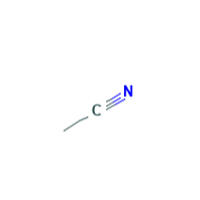-
Categories
-
Pharmaceutical Intermediates
-
Active Pharmaceutical Ingredients
-
Food Additives
- Industrial Coatings
- Agrochemicals
- Dyes and Pigments
- Surfactant
- Flavors and Fragrances
- Chemical Reagents
- Catalyst and Auxiliary
- Natural Products
- Inorganic Chemistry
-
Organic Chemistry
-
Biochemical Engineering
- Analytical Chemistry
-
Cosmetic Ingredient
- Water Treatment Chemical
-
Pharmaceutical Intermediates
Promotion
ECHEMI Mall
Wholesale
Weekly Price
Exhibition
News
-
Trade Service
The production process of 1,3,5-tris(bromomethyl)-2,4,6-trimethylbenzene, commonly known as tris bromide, involves several stages, from raw material preparation to final product purification.
The following is an overview of the production process of tris bromide in the chemical industry.
- Raw Material Preparation: The production of tris bromide begins with the preparation of raw materials, which include 1,3,5-triammine-2,4,6-trimethylbenzene (TATB) and hydrogen bromide (HBr).
TATB is a solid chemical that is usually prepared by a series of chemical reactions involving aniline, formaldehyde, and nitric acid.
Hydrogen bromide is usually prepared by the reaction of bromine with hydrogen chloride. - TATB Hydrolysis: In the next step of the production process, TATB is hydrolyzed in the presence of a strong acid catalyst, such as sulfuric acid.
The hydrolysis reaction converts TATB into the corresponding amine, which is then further treated to remove any unwanted impurities. - Bromination of Amine: The next step is the bromination of the amine, which is carried out by adding hydrogen bromide to the amine solution.
The reaction between the amine and hydrogen bromide results in the formation of tris bromide, which is then extracted from the reaction mixture using a solvent such as ether or benzene. - Purification: The tris bromide produced in the previous step is typically impure and requires further purification to remove any remaining impurities.
This is usually done using a combination of chromatographic techniques, such as distillation and crystallization. - Characterization: After purification, the final product is characterized to ensure that it meets the required purity and composition standards.
This involves a range of analytical techniques, such as spectroscopy, chromatography, and other chemical tests. - Packaging and Shipping: Once the tris bromide has been purified and characterized, it is packaged in appropriate containers and shipped to customers.
The final product is usually stored in a cool, dry place to prevent degradation or contamination.
In conclusion, the production process of tris bromide involves several stages, including raw material preparation, hydrolysis, bromination, purification, characterization, and packaging.
Each stage must be carried out carefully to ensure that the final product meets the required specifications and quality standards.
The production of tris bromide is a complex process that requires a high level of technical expertise and specialized equipment.
As such, it is typically carried out by experienced chemical companies and research institutions.






